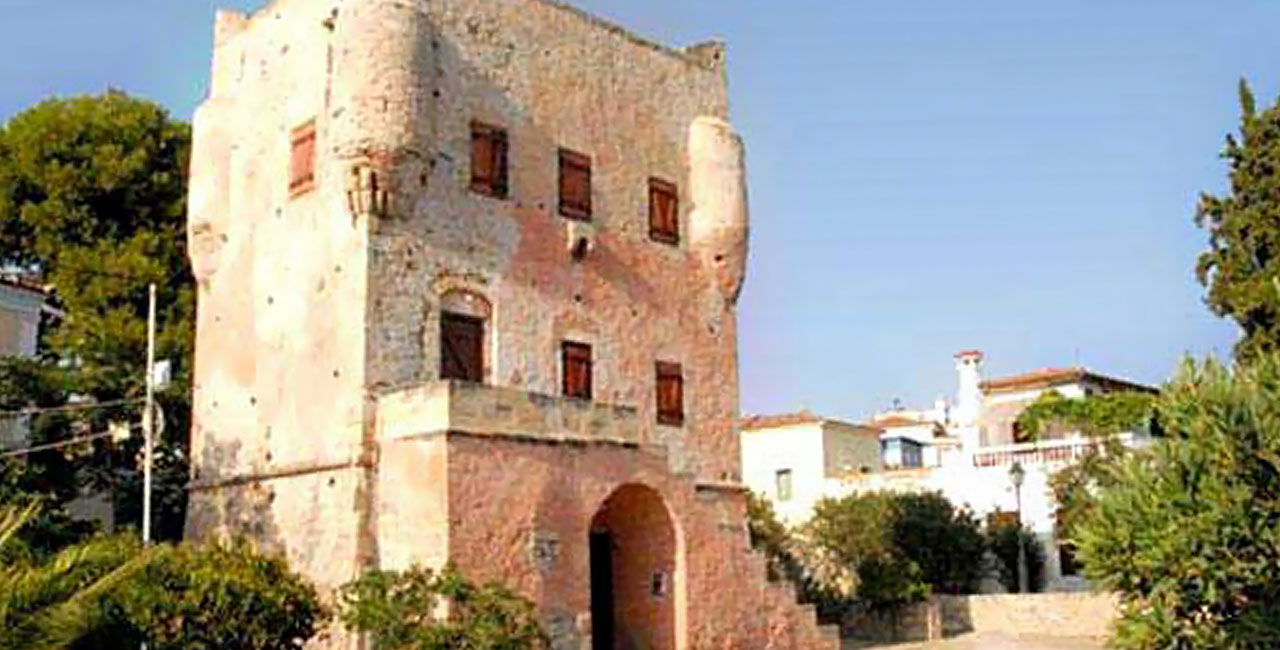
Sightseeings in Aegina town
The history of Aegina is rich with daily opportunities for escapes.
- Markello's tower was built around 1800 by Spiridona Markello who was a member of Parliament in Aegina. The first greek government from 1816-1828 was housed at Markello's tower along with Greek fund organization for a certain period of time. Today, at Markello's tower, is the Spiritual center of the Municipality of Aegina and the center of social speculation called "Spiros Alexiou".
- The Cathedral was also used as a parliament house in 1827 and in 1828 for the first greek goverment. In the Cathedral, there are many historic relics, a marple icon screen, remarkable murals and icons.
- In 1830, after a donation made by a Swiss banker called Eunardios, the Eunardios School of Teaching was built next to the Cathedral which is a neoclassic building. Apart from the central part, the building has 2 rooms. In one room was the central school for students who continued their studies. In the other room were three-month training courses for teachers.
- The Government House is located near the Cathedral, in the center of the city. It's a very important building for modern greek history. In this building was the first government of Greece. It was Ioannis Kapodistria's house. It's a two-storey, stony building with a wooden roof. On the first floor, the first room was the office, opposite the secretary's office and on the right was the record office room. Today, on this floor, is the historic record office room of Aegina.
- Next to the Government House, is another stony building which today is the Municipal Library of Aegina..
- In the southeast of the city, is the Orphanage which was built by Ioannis Kapodistrias in a building block which was offered by the Dimogerontia of Aegina. It was used for shelter and as a school for the orphans. The orphanage had laboratories where the children learned skills. So, there were printing-houses, dressmaking, shoemaking and bookbinding. The church of Sotiras and the National Library were built in the orphanage. In this building up to 1828, was the first archaeological museum, the first National Printing house, the lithographic, the library and the first greek school of Music.
- Αρχικός προορισμός του ήταν η στέγαση, σίτιση και εκπαίδευση περίπου εξακοσίων ορφανών του Αγώνα. Έτσι χρησιμοποιήθηκε σαν στέγη και σαν σχολείο για τα ορφανά αγόρια. Στο ορφανοτροφείο λειτούργησαν εργαστήρια για να μαθαίνουν τα παιδιά κάποια τέχνη. Εκεί λειτούργησαν: τυπογραφία, ορολογοποιϊα, ραπτική, ξυλουργική, υποδηματοποιϊα και βιβλιοδετική. Στο κτίριο του ορφανοτροφείου στεγάστηκε το πρώτο Αρχαιολογικό Μουσείο. Διευθυντής και έφορος του Μουσείου ήταν ο Κερκυραίος Λόγιος Ανδρέας Μουσταξύδης, πιστός φίλος του Καποδίστρια. Μέσα στο ορφανοτροφείο κτίστηκε ο Ναός του Σωτήρα και η πρώτη Εθνική Βιβλιοθήκη. Εκεί στεγάστηκε το πρώτο Εθνικό Τυπογραφείο, λιθογραφείο και βιβλιοπωλείο και το πρώτο Ελληνικό Ωδείο.
Το 1834 κλείνει και παραχωρείται στη Σχολή Ευελπίδων. Το 1842 λειτουργεί ως Λοιμοκαθαρτήριο. Από το 1848 έως το 1860 παραμένει κενό. Το 1860 λειτουργεί ως ψυχιατρείο. Από το 1866 έως το 1869 φιλοξενεί πρόσφυγες της Κρητικής Επαντάστασης. Τέλος από το 1880 μέχρι το 1984 με κάποιες μετατροπές λειτούργησε σαν φυλακή ασφαλείας για ποινικούς και πολιτικούς κρατούμενους.

